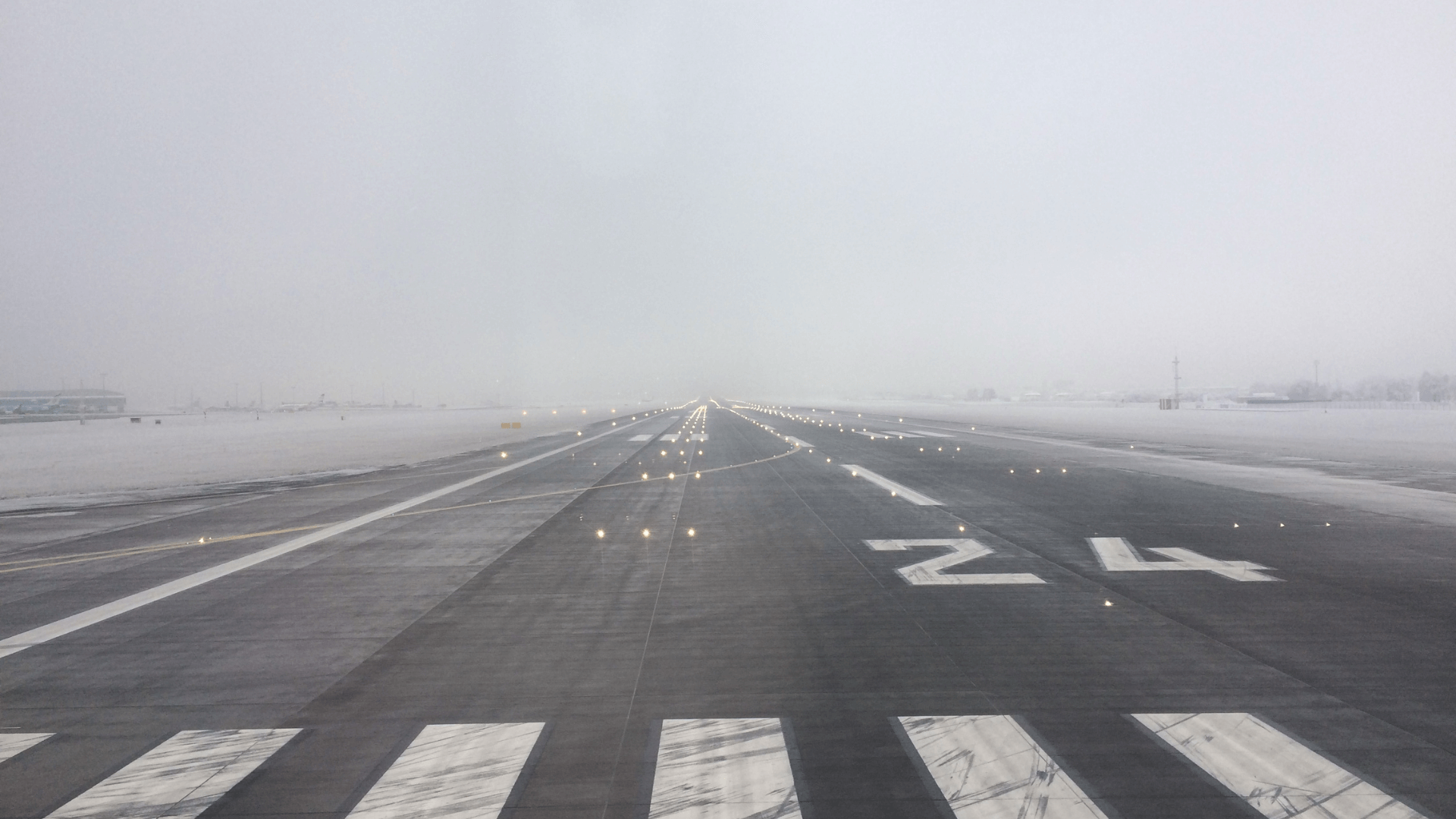
As we enter into 2023 with high hopes and expectations of ourselves and the world around us, it behooves us to stop and discuss the ecosystem within which we all operate. We are a collection of human beings who, despite our best efforts, make mistakes – mistakes that expose us to varying levels of risk.
In the risk management community, risk is largely assessed as a product of the probability of an event, as well as the severity of that event. To this point, we will often find that our day-to-day risks are relatively high-probability events with relatively low severity. Let us now consider, though, that your error was to accept an instruction or clearance onto a runway that was not intended for you. This type of mishap, known as a runway incursion, is an event that occurs rarely on the scale of probability but can have massive consequences for those involved. Such an example is the catastrophic collision of KLM 4805 and Pan Am 1736, both Boeing 747 aircraft, on the runway at Los Rodeos Airport, at Tenerife in the Canary Islands, on March 27, 1977, killing 583 people. The KLM pilot commenced their takeoff roll while the Pam Am aircraft was still taxiing on the runway in heavy fog, and the rest is an event marked as the worst aviation disaster in industry history.
In contemporary times, increased levels of air traffic coupled with a myriad of factors, make runway incursions a top operational risk to flight safety and require significant attention by industry stakeholders – yourself included.
In this first post of 2023, we will explore this phenomenon of runway incursions, or the improper positioning of aircraft, vehicles, equipment, or personnel on a runway or its protected area, and empower you with the best resources meant to reduce your risk of exposure to this type of event.
“…the Airbus was accelerating through 100 knots indicated airspeed when the flight crew observed a [Metroliner] crossing […] from south to north at the intersection of a taxiway”, reads the Transportation Safety Board report of a December 2016 Canadian runway incursion. Immediately, the uninformed reader may make a series of potential assumptions:
“…the Metro crossed without an instruction to do so…”
“…the Airbus must’ve taken a clearance meant for someone else…”
“…the air traffic controller must have screwed up…”
However, all of these assumptions are demonstrably false, and all parties involved in this event survived to fly and work another day, and to bear witness to a systemic failure that led to this mishap. In reality, the Metro was instructed to cross the runway; the Airbus was cleared for takeoff; and the air traffic controllers involved (there were two) both believed that their actions were the best at the moment for their respective aircraft. The critical factor here is that a runway rarely in use and often crossed by aircraft meant “controllers [had] developed a strong schema for automatically clearing aircraft across without coordination”, the TSB said in its 2018 report, and no doubt, aircraft had grown equally accustomed to doing so, as well. Therefore, while you may think that the buck stops at the controller, recall a pilot's responsibility for accepting and complying with instructions and clearances, and a pilot's responsibility for the safe operation of an aircraft. Consider the airport operator's obligations towards runway incursion prevention and contemplate the known science on human factors which we have all succumbed to in our lives at some point. Quickly, my hope is that your level of critical thought as a student pilot has expanded to show this as a team effort, and a so-called “predictable surprise”, as most mishaps often are.
The intention of this article is not to pull this specific event apart – the Transportation Safety Board and all other stakeholders have long since done that, and no doubt, this event has given all involved much to overthink in recent years. The intention here is merely to illustrate that these events do occur; they occur as a result of a series of breakdowns in a system layered to prevent mishaps (Reason’s Model); and to learn from their horrific experience, thereby attempting to find a silver lining of prevention - a lesson best delivered in the ground school days, which can be applied by student pilots in flight training to prevent mishaps in the future as private pilots and commercial pilots. As all involved were professional pilots and air traffic controllers, and all were doing as they believed to be correct, a mishap still occurred, despite the best of intentions. Ask yourself now “what are the chances that I as a student pilot in flight training, with my limited scope of imagination and experience for what can go wrong, could find myself in a scenario such as this?” I will tell you, your chances are pretty high, and you may find yourself as an unwilling and unwitting participant in a mishap, even if you are operating correctly.
From personal experience as a controller, and as a pilot, I have seen - and been - the aircraft on short-final for landing as an aircraft crossed the runway hold-short line. In those cases, as a controller, I had the time to stop the offending aircraft and reach out to the landing aircraft to initiate a go-around. As a pilot, I recall saying “WHOA! What the…” before my hands and feet took over instinctually to climb away from the intended landing runway, only to look out and see the lurching of the incurring aircraft as they stood on their brakes!
To aid in mitigating the risk of runway incursions, the International Civil Aviation Organization (ICAO) published a runway incursion prevention manual in 2012 which identifies a series of risk factors for, and best practices to prevent runway incursions. For pilots and air traffic controllers, two particular prevention techniques stand out as mitigations, and as is common to many incursions:
- Avoid the use of multiple runway access points
- Avoid the use of obliquely angled runway entry points
In many scenarios, both of these rules are broken - often as a result of operational culture or a series of events that normalize the deviance from a best practice. In one such case of my own as an air traffic controller, my unit operated departures from intersections extensively, and as such, I had not personally taken the initiative early in my career to familiarise myself with the existing body of literature on runway incursion prevention. I simply followed along and was a passenger. While I was “doing my job”, the truth is that I was not doing my job professionally enough to be equipped with the knowledge to stand up and say “no, we should not be doing this'', and some years ago, I ultimately experienced a simultaneous runway incursion at two points along a runway during flight operations. It is hard to admit, but to that end, I had personally failed. This event was my impetus to start learning, and to start speaking up! Never again would I be a passenger - I would learn it all, and I would be an advocate for change where change was due. Note, as of this writing, procedures are aligned with ICAO best practices on runway incursion prevention.
So, what are these best practices, and who do they apply to? Bluntly: everyone who operates in an airport! Recently, in mid-November of 2022, in Lima, Peru, an airport fire truck was participating in a planned and coordinated exercise and entered an active runway and was subsequently struck by a departing Airbus A320, killing two firefighters. Miraculously, these were the only two fatalities. This event highlights the need for all involved in movements at an airport to be familiar with their operations and best practices to prevent incursions. Therefore, no matter your role, it is your responsibility to familiarise yourself with risks – all operational risks – and their best practices and mitigations.
In the context of Level Flight as a student pilot, some highlights for you to consider when operating around a runway at your aerodrome include, but are not limited to:
- Do not accept an instruction or clearance to enter a runway from an oblique angle (where the arriving and departing end is not clearly visible without looking behind a wingtip…)
- If you are lined up on a runway for longer than 90 seconds, or longer than anticipated, speak up and advise ATC that you are still holding in position. Note: it is ATCs responsibility to advise you of any delay on a runway and if the delay will be longer than anticipated
- Turn on all aircraft lighting (even by day) when on or crossing a runway
- If the clearance or instruction is confusing or not heard in full, ask for clarification
- Ensure that ATC has included the location for you to line up or depart from in their instruction or clearance if it is from a mid-field intersection, or if there are other runway entry points in use
- Keep your eyes out of the cockpit as much as possible for other movements near the runway
In all cases presented to you here, systemic/team failures contributed, and it is by the grace of the aviation gods that no worse transpired. But that mercy from either the gods or the raw statistics runs out and is running out as we speak. There is no history recorded that gives you forgiveness for an error later on, and so it is on you moving ahead to save lives.
Nick van Aalst
Level Flight's team of aviation professionals can guide you to become a safe and competent aviator. Whether getting a private pilot license for recreational flying or going all the way with a commercial pilot license, we have a course to suit your needs. Reach out to our team today by filling out the online contact form and take the first step toward earning your wings!
Level Flight Alumni Say
The number of Level Flight Ground School Pilots continues to grow. We are proud that our comprehensive and innovative Ground School curriculum inspires students to complete their first steps and continue to develop to achieve their aviation dreams. Here is what some of our students past and present say about their experience with Level Flight Ground School.
Take Flight Now
Level Flight is Canada’s best online ground school. It is our mandate to provide higher quality, more engaging training for Canadian Student Pilots. If you are seeking the exhilarating freedom of flight for a hobby or with aspirations of a career in the skies, Level Flight offers the best ground school experience available. Sign up for our online learning platform now and discover the adventure that awaits you at Level Flight.
By submitting this form, you opt-in and give expressed consent to receiving SMS / text messages, calls, and emails from us for the purposes of communication related to your inquiry or related to the products and or services we provide.
